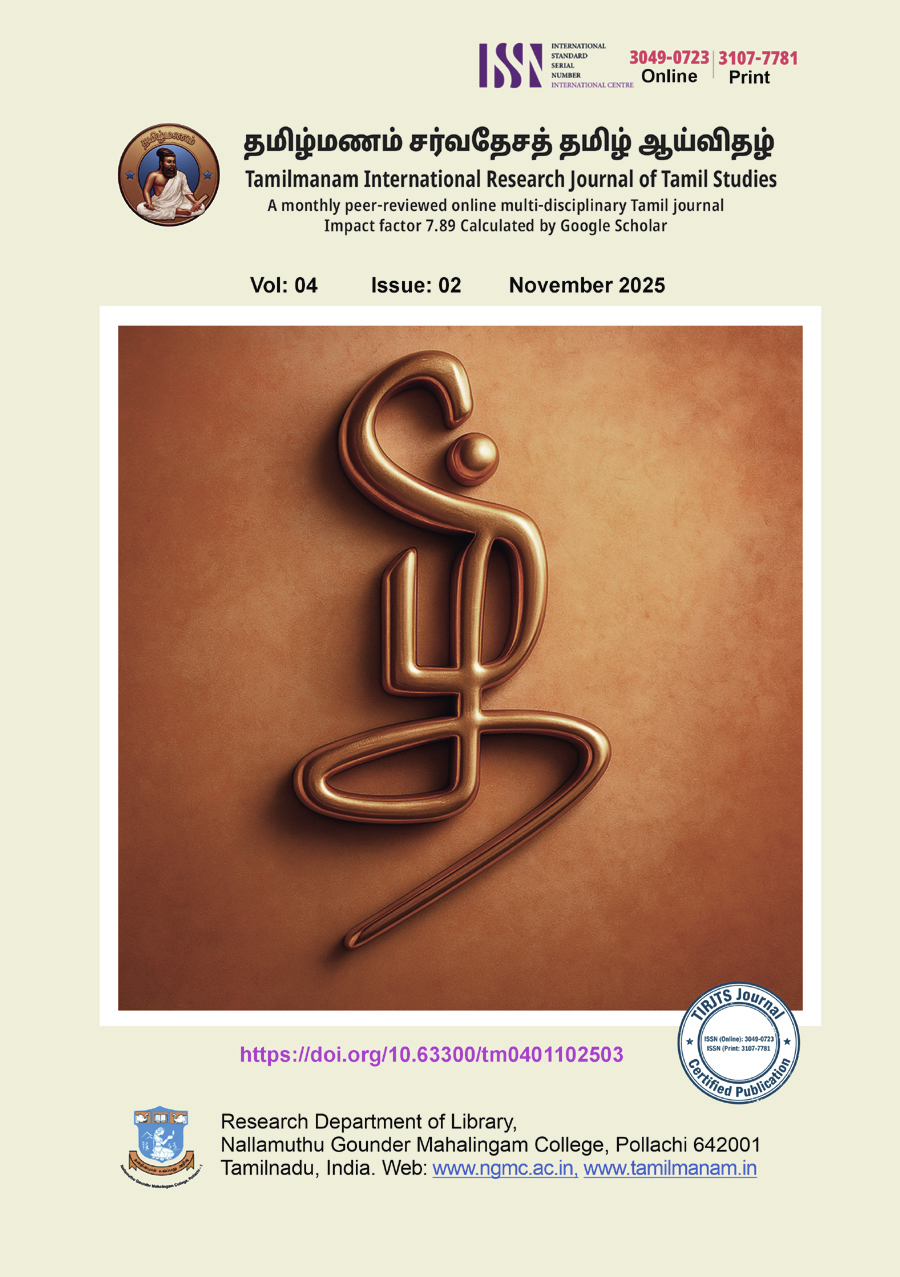சீதாயணம் புதினத்தில் சாதி என்னும் கருத்தாக்கம்
Conceptualization of the caste in Seethayanam Novel
DOI:
https://doi.org/10.63300/tm0402112508Keywords:
Myth, Reinterpretation, Caste, SeethayanamAbstract
Human societies are sustained through shared cultural narratives, among which myths and literature play a crucial role in shaping and regulating collective life. These narratives often function to legitimize and reinforce the ideologies of the ruling classes, ensuring conformity and social order. Yet, within the same cultural framework, myths and literature also carry the potential to question authority and articulate dissent. The Ramayana, as a foundational myth, upholds caste hierarchies and consolidates social dominance through its symbolic structure. In contrast, Seethayanam reimagines and reclaims these very myths, exposing the historical realities and inner workings of caste oppression. Through its re-reading of myth, the novel cultivates a counter-discourse that challenges inherited hierarchies and affirms a resistant consciousness. This paper explores how Seethayanam conceptualizes caste and redefines myth as a site of ideological struggle and social critique.
ஒரு சமூகத்தில் குழுவாகச் சேர்ந்து வாழும் மனிதர்களைப் பண்பாட்டு ரீதியிலான தொன்மங்களும் இலக்கியங்களும் ஒழுங்குப்படுத்திக் கட்டுப்படுத்துகின்றன. ஆளும் வர்க்கத்தின் கருத்தியல்களுக்குப் பெரும்பான்மை மக்களை இணங்கச் செய்யும் வேலையை இவை செய்கின்றன. அதே சமயத்தில் அதிகாரத்திற்கு எதிரான கருத்தியலையும் தொன்மங்களும் இலக்கியங்களும் கொண்டுள்ளன. இராமாயணத் தொன்மங்கள் சாதியக் கட்டமைப்பை உறுதிப்படுத்தி, ஆதிக்கத்தை நிலைநாட்டுவதாக அமைகிறது. அதே தொன்மங்களை மறுவாசிப்புச் செய்து படைக்கப்பட்ட சீதாயணம் புதினம் சாதியின் வரலாற்றையும் அதன் இயங்கியலையும் விளக்கி, அதற்கு எதிரான மனநிலையை உருவாக்கும் வகையில் அமைந்துள்ளது. சீதாயணம் புதினத்தின் வழியாக அறியலாகும் சாதி பற்றிய கருத்தாக்கம் என்னவென்பதை இக்கட்டுரை ஆராய்கிறது.
Downloads
References
1. Arunan. (n.d.). Social reform in Tamil Nadu: A two-century history. Bharathi Puthakalayam.
2. Elango, C. (n.d.). Caste and Hindutva in Tamil Nadu. Alaigal Pathippagam.
3. Gouthaman, P. (Ed.). (n.d.). Why should you get angry if I say it? NCPH.
4. Govindasamy, I. (n.d.). Caste and class. Alaigal Pathippagam.
5. Jaiswal, S. (n.d.). Brahminical hegemony. (Saamy, Trans.). Sinthan Pathippagam.
6. Mathaiyan, P. (n.d.). Sangam period tribal society and state formation. Pavai Pathippagam.
7. Sengupta, M. (n.d.). Seethayanam. (G. Chatheswaran, Trans.). Anangu Veliyeedu.
8. Teltumbde, A. (n.d.). Anti-imperialism and annihilation of caste. (S. V. Rajadurai, Trans.). NCPH.
Downloads
Published
Issue
Section
License
Copyright (c) 2025 Dr. Satheeswaran G (Author)

This work is licensed under a Creative Commons Attribution 4.0 International License.
Our journal adopts CC BY License Creative Commons Attribution 4.0 International License http://Creativecommons.org//license/by/4.0/ . It allows using, reusing, distributing and reproducing of the original work with proper citation.


